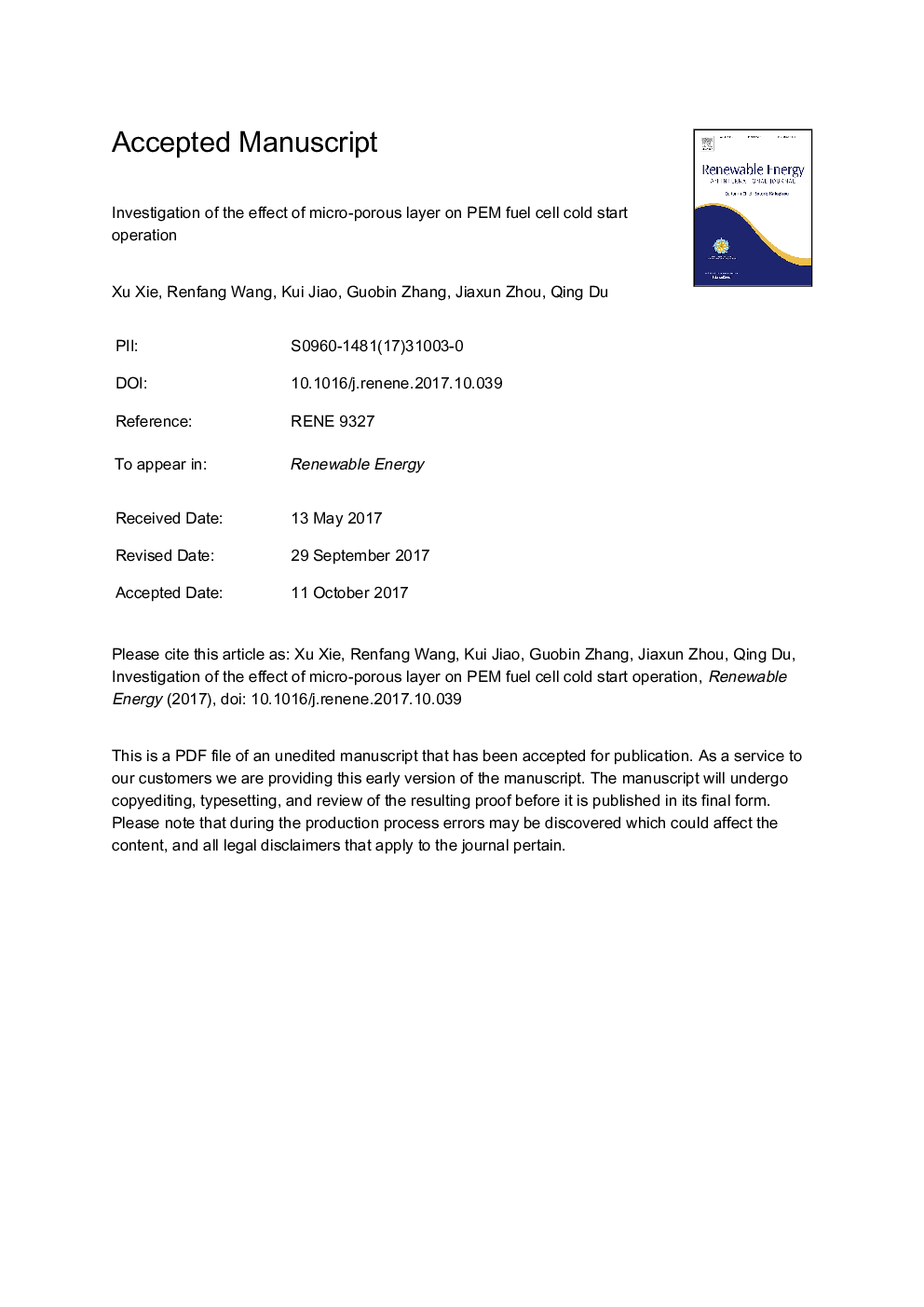| Article ID | Journal | Published Year | Pages | File Type |
|---|---|---|---|---|
| 6764982 | Renewable Energy | 2018 | 42 Pages |
Abstract
The effect of micro-porous layer (MPL) on proton exchange membrane (PEM) fuel cell cold start is investigated experimentally with theoretical analysis. Under normal condition, the anode and cathode MPLs can improve the independency on inlet gas humidification on the corresponding side. For potentiostatic startup, the humidity independence enhanced by anode MPL improves the cell performance at around â7 °C. Cathode MPL can promote the water back diffusion and hinder the ice formation on the catalyst layer (CL) surface at low temperature (e.g. â10 °C). Besides, anode MPL also contributes to reducing the blockage tendency at very low temperature (e.g. â15 °C or lower). For galvanostatic startup, water electrolysis and carbon corrosion may occur which leads to the voltage reversal when the cell cannot achieve the desired current density, which may produce more waste heat. Low water content will aggravate the voltage reversal and carbon corrosion.
Related Topics
Physical Sciences and Engineering
Energy
Renewable Energy, Sustainability and the Environment
Authors
Xu Xie, Renfang Wang, Kui Jiao, Guobin Zhang, Jiaxun Zhou, Qing Du,
